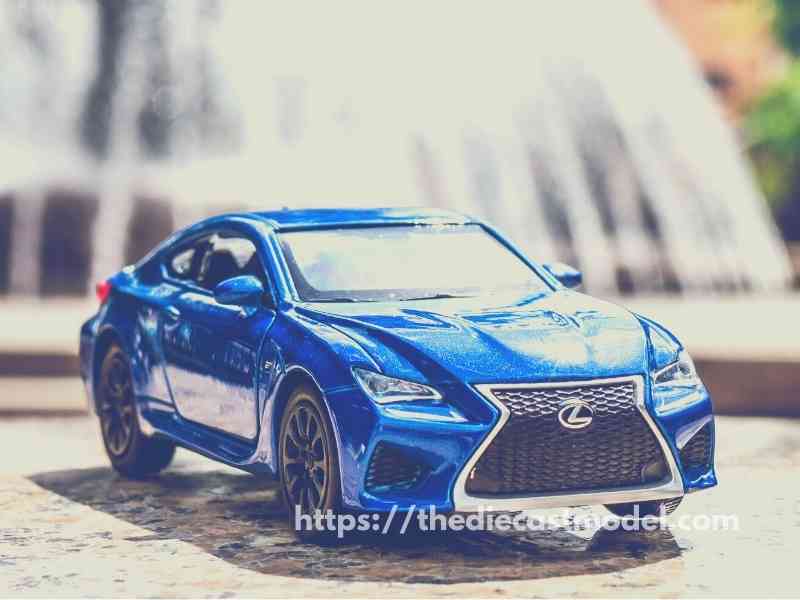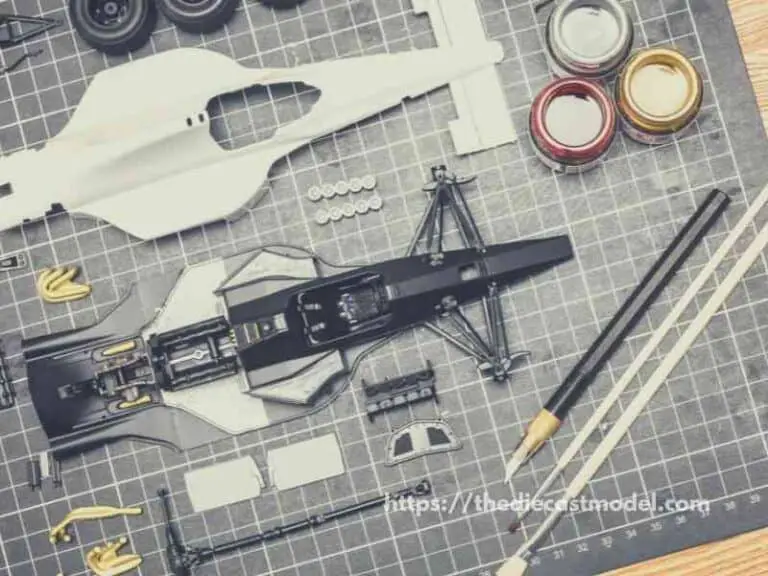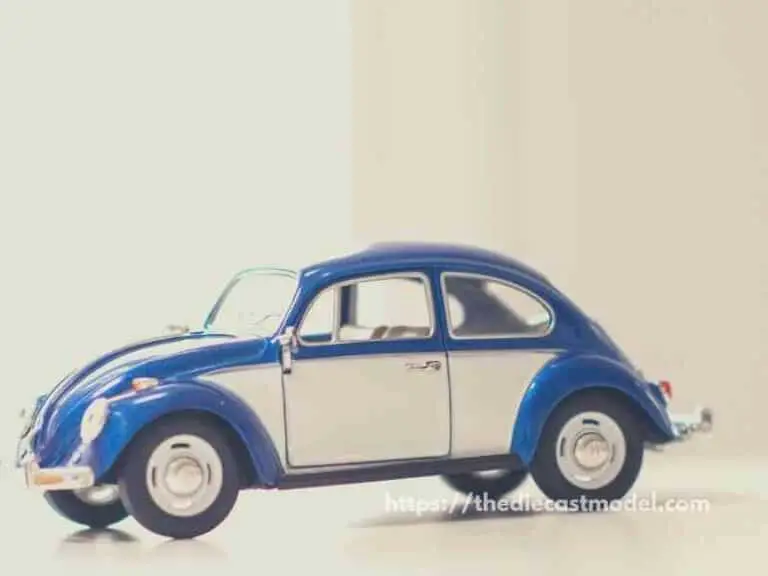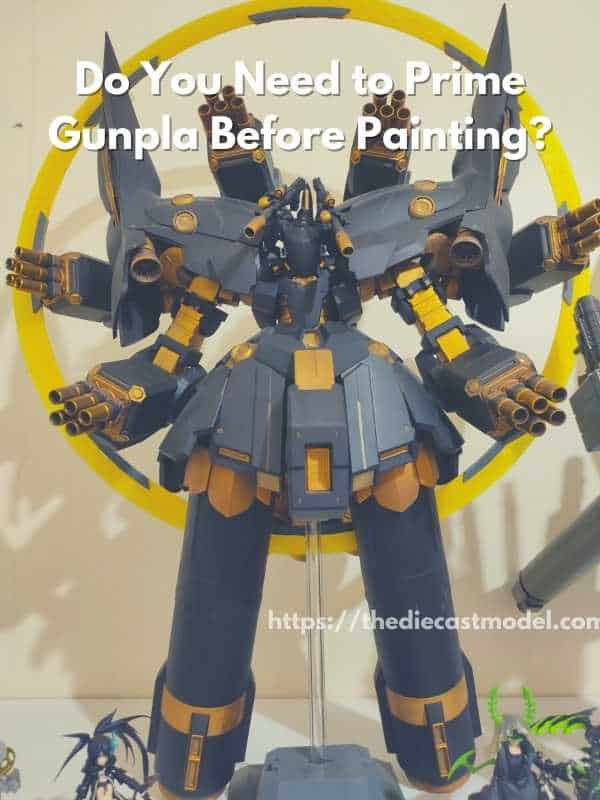Average Size of Diecast Scales: Analysis and Use
Being a car enthusiast doesn’t mean only collecting diecast models of your favorite supercars; it also means you know your stuff well. You must know the scales of diecast collectibles and how much space you can allow them. Among the scales, 1:18 and 1:64 scales are famous for automobile replicas. But, do you know how long the 1:18 and 1:64 scale models are?
Here is the summary of diecast scales relative to the size:
- A 1:12 scale is approximately 14-15 inches or 36-38 centimeters long.
- A 1:18 scale is approximately 9-12 inches or 24-30 centimeters long.
- A 1:24 scale is approximately 6.5-8 inches or 16-20 centimeters long.
- A 1:32 scale is approximately 4-6 inches or 10-15 centimeters long.
- A 1:43 scale is approximately 3.5-5inches or 8-12 centimeters long.
- A 1:64 scale is approximately 2.5-3 inches or 6-7.5 centimeters long.
This blog will discuss the average size of diecast scales, along with the use of 1:12 to 1:64 models.
So, let’s jump to the discussion.

How long is a 1:12 to 1:64 scale model car?
Diecast scale can be expressed as a fraction or as a ratio; both have the same meaning.
So, in terms of vehicle scale, 1/64 and 1:64 are precisely the same.
For example, if a real-life Corvette Stingray is approximately 15 feet (180 inches) long, the same car on a 1/18 scale would be 10 inches long (180 divided by 18), and a 1/64 scale replica would be approximately 2.8 inches long.
1:64 scale is common for models and miniatures in which one unit (such as an inch or centimeter) on the model represents 64 units on the actual object.
It’s also known as the “three-sixteenths scale” because 3/16 of an inch represents one foot.
On the other hand, 1:18 scale replicas are one-eighth the size of the original object.
The most famous item in this category is 1:18 scale automobile replicas, typically made of Zamak zinc diecasting alloy with plastic parts. The colloquial term for this type of toy or replica is “1:18 scale.”
The 1:64 scale is the most popular for diecast cars.
Though collectors and manufacturers refer to popular diecast lines as 1:64, toy vehicles are typically made to “box scale.”
In other words, the model’s size is determined by the standard packaging’s size (formerly a cardstock box, now usually a clear blister-card).
For the passenger cars found in many diecast lines, 1:64 is a reasonable approximation.
Hot Wheels and Matchbox, GreenLight, Ertl, AutoWorld, Code 3, Johnny Lightning, and Jada Toys are some brands of diecast toys in and around this scale.
Maisto, Bburago, Corgi, Tomica, Kyosho, Tarmac Works, Majorette, Schuco, and Welly, among many others, are available on this scale outside of the United States.
1:18 scale is usually famous for high-end model replicas.
These premium models feature genuine leather interiors, accurate engine detail, functional sunroofs, movable windshield wipers, adjustable seats, and other realistic accessories.
Depending on the vehicle, most models are approximately 11 inches (280 mm) long, 5 inches (130 mm) wide, and height is about 4 inches (100 mm).
Model car companies typically have to license agreements with real car manufacturers to make replicas of their cars, whether they are still in production or have been phased out.
A 1/18 scale version of a car will be larger than a 1/64 version.
The number under a fraction is referred to as the “denominator,” and the larger the denominator in the vehicle’s scale, the smaller the car.
So, a 1/18 scale diecast car is typically 9-12 inches long (depending on the size of the actual car).
A 1/24 scale diecast car generally is 6.5-8 inches long. And, 1/64 scale cars are typically 2/5-3 inches in size, similar to “matchbox” or “Hot Wheels” cars.
For your convenience, here is a data chart of approximate sizes based on scale. Keep in mind that the actual size will vary depending on the size of the original car from which the diecast replica is modeled.
| Diecast Scale | Approximate Size |
|---|---|
| 1/12 Scale | 14-15 inches / 36-38cm |
| 1/18 Scale | 9-12 inches / 24-30 cm |
| 1/24 scale | 6.5-8 inches / 16-20 cm |
| 1/32 Scale | 4-6 inches / 10-15 cm |
| 1/43 Scale | 3.5-5 inches / 8-12 cm |
| 1/64 Scale | 2.5-3 inches / 6-7.5 cm |
The use of each diecast scale
The difference in scale usage is since they account for the actual size of the object. For instance, car models have 1:18 scale models because a car that is 1/18th the size can easily be stored. But, the 1:18 scale for an airplane is practically impossible due to its massive size. That is why planes usually use 1:200 and 1:500 scales because of their giant appearance. For the same reason, you can’t find a 1:200 scale car; otherwise, you have to use a microscope to see it.
These are some of the popular scales used for diecast vehicles
This content was originally posted on thediecastmodel.com. If it appears on other websites, it is a violation of the copyright owned by thediecastmodel.com.
1:12 Scale
The 1:12 scale are huge, highly detailed models; typically 14 or 15 inches (36 or 38 cm) long, primarily aimed at adult collectors. These scale models are usually much more expensive than 1:18 scale models. There are also a lot of diecast motorcycles on this scale are available.
1:18 Scale
The 1:18 scale are large, detailed models, typically 9 to 12 inches (18 or 20 cm) long; primarily aimed at adults. Although some European and Australian companies produce cars and even trucks on this scale, the United States is the primary market for this scale.
1:24 Scale
Because many construction kits and dealer promotional models are these sizes, the 1:24 scale has long been a popular scale in the United States. Mebetoys of Italy had a large selection of low-cost 1:24 toy cars. The Franklin Mint and Trax also use this scale.
1:32 Scale
The 1:32 scale size is most commonly used for model tractors and other agricultural vehicles. Britain has used this scale for decades, and Ertl and Siku also use it. Vintage car models in 1:32 scale are also prevalent.
1:43 Scale
The 1:43 scale is the most popular model car scale in the world. Dinky popularized this scale in the 1930s because it was compatible with O gauge model railways. This scale is most commonly used in the United Kingdom, Europe, Japan, and Australia, but less so in the United States. In continental Europe, 1:43 scale model trucks are popular.
1:64 Scale
The 1:64 scale is a popular scale for farm models and American model trucks. This is the standard size for Matchbox, Hot Wheels, Johnny Lightning, and model Nascar racers.
The larger the scale, the pricier it gets. While 1:64 scale models are for everyone, kids and adults alike, 1:18 models are more geared toward elite collectors if you consider the price point.
You can find the price per ounce of scales on a separate article I’ve made. It came from y experiment of checking the model price relative to their scale. Here is the link if you’re interested: Diecast Model Scales: An Analysis

“Only the things I love”
thediecastmodel.com is reader-supported. When you buy through links on the site, I earn an affiliate commission.
So, here are the things I love when taking care of my Diecast Models.
Cleaning the Models
The first we are going to talk about is cleaning the models.
Removing Dust
- Air Brush – For me, this is the best since it not just removes dust but you can use it in painting/clear coating.
- Air Duster – This is a good alternative to Airbrush
- Normal Brush – If you are short on budget, you can use a normal brush. However, make sure that the brush has soft bristles because there are some hard brushes than can cause scratches. That’s why I recommended a good brush that can do the job properly.
Cleaning and Shining Hacks
Well, here are some of my cleaning hacks for removing scratches, oxidation, and so much more.
- Removing Decal Adhesive – Use Goo Gone on those hard-to-remove decal adhesives. It works fast and works like charm!
- Waxing and Polishing – Here is something a lot of people don’t know. Waxing protects the clear coat and paint while polishing shines the model. Instead of buying it separately, use a 2 in 1 to save money. Get this instead.
- Beginner Wax – The wax I recommended earlier is good and provides the best results based on my experience. But a beginner might have a problem especially if they’re not good at applying wax. Solid wax reaching hard to reach surface can be hard to remove. You have two choices here. One is to use a qtips to reach those surfaces, another is to use a liquid wax I recommended.
- Cleaning Wheels, Rubber, Plastic – Do not forget that rubber and plastic surface are quite different, especially in the cleaning process. Just wiping it down won’t do the job. That’s why I use Meguiar’s Vinyl and Rubber Cleaner and Conditioner. Works like charm!
- Make the Wheels Shine! – Making our models look good won’t be complete without tiny details such as shiny wheels! Do not forget this because however small this is, the difference can be as big as night and day.
- Remove Scratches Easily – Tiny scratches are not the end for your model. Here is a simple trick I’ve been using to make my models look scratch-free even without repainting. Use T-Cut.
Painting the Models
Painting Tools
Make sure when you paint models, have these ready.
- Tape – A tape is important if you are painting a straight line. Furthermore, it will prevent your paint to scatter on other parts. I recommend Tamiya Tape since it is really made for models. Furthermore, they stick really well preventing paint splatters.
- Brush (Beginner) – Find a good set of brushes to paint your models. Of course, you can opt for an airbrush but it’s quite expensive.
- Airbrush (Intermediate/Expert) – This will yield a significantly better result than an ordinary brush because you can easily spray the paint evenly. I recommend this if you know what you’re doing.
- Stand(Optional) – Stands are good because it can be hard to manually hold the models while painting. It is optional but in my opinion, the price is well worth it for the comfort it gives.
- Drop Cloths – Drop Cloths will protect your surroundings from the paint.
- Primer – The most common beginner mistake I see is painting models without any Primer. A primer will prevent imperfections such as bubbles or paint not sticking to your models. It is a small price to pay for quality results.
- Clear Coat – A clear coat will protect the paint of your models. This will make the paint last longer. Also, it is the one responsible for making your models shine.
Paints
Of course, you can’t do painting properly without paint. So here are the ones I recommend.
- Acrylic Paint – Good for beginners because it dries quickly. However, it doesn’t produce results as good as enamel paint.
- Enamel Paint – Provides a good quality finish and longer-lasting paint. However, it takes longer to dry and requires expertise to use.
Model Maintenance
Model Storage
- Simple Wood Cabinet – While it doesn’t let you display your models, wooden cabinets are good storage for these models. For one, they are not heat conductors which means that the temperature inside will remain constant and remain cool. Furthermore, they prevent light from reaching the models which can cause oxidation.
- Clear Cabinet with Lock – If you want to display your models, then I recommend this. It closes so dust won’t easily get to your models. I also recommend you don’t put more than 1 model in each compartment since metals are good conductors of heat.
Model Photography
So you want to show off your models to others? Well, I got you covered.
Here is my beginner-friendly model photography tutorial that teaches everything from taking pictures to the editing process.
You will also see me doing hands-on photography in that tutorial.
Here is the link: How to Take Pictures of a Diecast Model or Model Kit | Helpful Illustrated and Video Guide
Source






